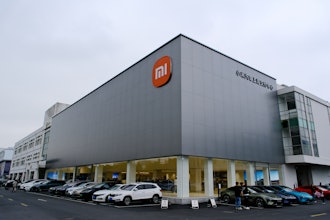In the wake of the protracted economic downturn and equally slow recovery, manufacturers have been challenged to find new ways to improve margins and revenue growth. Those companies that have best adapted, both operationally and strategically, have set new standards in cost-savings, quality control, and productivity. Although most cost-savings efforts have been focused on cost of goods sold, manufacturers spend 20 percent or more of their total revenue on non-product or “indirect” expenditures.
Indirect expenses include areas such as HR, benefits, IT, capital equipment and other goods and services that do not go into the finished product. These costs represent a large area of spend—and a significant opportunity for savings. This opportunity is not lost on business leaders: half of Fortune 1000 Executives say reducing indirect and non-product input costs could provide significant savings, without disrupting business. (Source: Harris Poll Survey) However, capturing this opportunity requires a new model for managing indirect spend.
Despite the bottom-line opportunity, indirect purchases tend not to get the same level of expert attention and proactive management that is usually applied to direct materials procurement. In fact, a recent survey of procurement executives conducted by Procurement Leaders found that two-thirds of organizations leave as much as 40 percent of their indirect expenditures relatively unmanaged. (Source: Procurement Leaders Plus: Statistical Nightmare) Why?
First, indirect costs span hundreds of buying categories (from air travel to electricity to IT hardware), each requiring specialized domain expertise to source optimally. Second, the buyers of these goods and services span multiple departments (and therefore buying centers) throughout the manufacturing organization, from HR to IT to Operations. The fragmented nature of indirect purchases hinders effective and comprehensive management. As a result, internal efforts to drive savings in indirect spend tend to fall short due to a lack of specialized category experts, an absence of real-time market intelligence, and disconnected processes that are not managed in a coordinated and continuous manner.
With increased pressure to find new ways to control costs and improve revenue and margin growth, manufacturers should take a hard look at alternative approaches, such as extended enterprise models that allow firms to tap and leverage external expertise, knowledge and capabilities, to manage indirect spend.
The Future of Cost Management: Confronting Indirect Spend, Directly
Getting the most out of indirect goods and services requires a new mindset and a new model that embodies a number of core principles that elevate procurement to a higher level of excellence. At Procurian, we call this The New Procurement. Simply put, this means that procurement must go beyond direct material categories to address all spend categories, and move beyond managing smaller pockets of spend with procurement generalists and apply professional management to 100 percent of addressable spend. It means leveraging deep market and process expertise rather than general sourcing process knowledge and applying real-time market intelligence rather than generalist knowledge based on outdated pricing data and supply market knowledge. Finally, it means measuring savings only after spending occurs rather than at the point of negotiation and delivering value beyond cost savings to support corporate objectives like sustainability, product innovation and growth instead of a narrow focus on cost savings alone (See The New Procurement). To really achieve these goals, we’ve seen companies increasingly look at leveraging extended enterprise models to access needed skills and resources, such as category expertise, market intelligence and process expertise, and extend the capabilities of their internal teams.
Specialized Expertise — Get More Spend Under Management: Consider the issue of specialized category expertise. The value may seem obvious in terms of sourcing and effective negotiation, but demonstrating deep expertise is also critical for gaining the trust and confidence from stakeholders in areas like IT, HR and Marketing who need to know that their business objectives and relationships will be protected if they open up their spend ”let procurement in”. However, it is often impractical for individual companies to build this expertise across all spend categories because of the required investment in professionals with the right level of experience and category depth. Thus, most firms end up relying on teams of procurement generalists who work across many categories and miss the opportunity to maximize spend under management.
In categories such as IT, where contracts are large, but may span several years, in-house personnel have limited opportunities to keep market knowledge current through actual sourcing events. Alternatively, by tapping category specialists via an extended enterprise approach, manufacturers can gain access to current supply market intelligence and make more informed decisions.
Intelligence — Use Knowledge to Your Advantage to Drive Better Savings: Even when companies invest in category-specific procurement staff, it is difficult even for the best teams to maintain real-time market intelligence and proactively monitor supply markets in the absence of frequent market and sourcing activity and without an infrastructure built for gathering market intelligence. As a result, opportunities are missed, particularly when market prices are in flux. This underscores the point that major savings opportunities occur not just during sourcing, but through active, ongoing category management supported by deep market insight, visibility to strategic goals, and process rigor.
As one example, fixed-rate electricity contracts are commonly negotiated annually. But beneficial price fluctuations frequently occur at times that are completely independent of contract renewal dates, and energy buyers may miss opportunities to renew early or find other ways to take advantage of favorable market price movements. Procurian’s energy team proactively monitors markets to identify savings opportunities. In one recent case, our team observed a downward trend in electricity pricing and initiated a competitive bidding process that resulted in a 28 percent fixed-price rate reduction for that client, with improved contract terms.
Process — Drive More Savings to the Bottom Line: Even the best sourcing strategies and contracts do not guarantee that negotiated savings are actually realized when dollars are spent. Savings “leakage” inevitably occurs when buyers don’t buy the right products, don’t purchase from preferred suppliers, or aren’t charged the correct price. Preferred suppliers, pricing and contract terms need to be effectively communicated to buyers and tracked through the end-to-end process to catch non-compliance issues or pricing errors as quickly as possible—ideally before purchases are executed. To underscore the importance of engaging stakeholders, if they don’t feel actively involved in the process and ultimate selection of suppliers, these same buyers may choose to ignore preferred suppliers, driving down compliance and savings realization.
According to our benchmarks, the average company realizes only 60 percent of savings identified in the sourcing process. The Hackett Group has found that firms who have a “savings realization infrastructure” to measure and track savings report 71 percent higher annual savings than those that don’t. It should be no surprise that what gets measured gets done.
Effective indirect spend management can amount to real savings to the bottom line that equates to a margin point or more value delivered. Although the principles of The New Procurement may seem evident, in practice, few firms execute them effectively. Companies that are embracing the opportunity to optimize indirect procurement are increasingly turning to extended enterprise models in order to tap the right market intelligence, process expertise and built-out infrastructure—on demand—to help accelerate the time it takes to start realizing bottom-line value from indirect procurement initiatives.
Jeff Cooper is the manufacturing practice lead at Procurian, which utilizes a combination of industry specialists, advanced technology and infrastructure to help forward-thinking business leaders of the Fortune 1,000 achieve millions of dollars in savings by continuously managing expenses, reducing costs and mitigating risk. The company holds long-term relationships with a number of manufacturers, such as Timken, Kimberly-Clark and Whirlpool.



















